Rates of change in business have never been so high: 5-year EBIT margin volatility has jumped from 10 % to 20 % since the 1990s and companies move through their business life-stages twice as fast today compared to the early 1990s.[1]https://www.bcg.com/en-us/publications/2014/growth-share-matrix-bcg-classics-revisited.aspx
Companies therefore need to anticipate change. There is strong evidence that preemptive self-disruption is much more likely to be successful than involuntarily disruption. But many forces mitigate against this, especially the conservatism and complacency which often follow success. Too often when we need to be responsive to the environment, we end up following the same well-trodden paths in terms of process and thinking.
We need the equivalent of a ‘fire starter’ — something to kick start our minds, to push us out of habitual process-driven ruts. We propose that well-designed games can fulfill this function, unlocking imagination and intelligence, to take us to the starting line of developing great strategy.
Free up your mind
What job can games do? The idea of playing games in business may sound frivolous, but they can be a powerful tool to unlock a much-needed capacity: counterfactual thinking. Most of the time in business we focus on the factual world — the dynamics that exist around us and the problems they raise. However, it is sometimes vital to get away from what happens to be the case now (the factual) to consider imaginative new possibilities (the counterfactual): the realm of what is not currently the case, but could be.
When we lack counterfactual thinking, we become mentally and practically stuck. We focus on exploiting the prevailing offering and business model only, instead of asking broader strategic questions: What other products and services could we develop, how could our company transform itself, what scenarios might throw us off course or offer opportunities in future? We need to provoke counterfactual thinking in order to explore, learn and change.
Former IBM CEO Lou Gerstner pointed out that two major barriers to substantial change in large companies are: (1) failure to create a sense of urgency, and (2) failure to address entrenched interests. Games help overcome both these barriers too. First, because we are tuned to deal with what is most immediate to us, there is usually no urgency to contemplate new possibilities. But by putting daily demands on hold, games create a context where thinking counterfactually becomes the priority. As well as the permission they give, the competition and excitement of games drives a sense of urgency.
Second, it often seems pointless to imagine possibilities for change, if you don’t believe that they could ever happen, because of entrenched interests. Games address this barrier by creating an interaction in which entrenched interests are put aside, reducing the risk of suggesting new ideas. It is hard to ask hypothetically in a regular business meeting about transformation, if the division head is sitting right there. But in a game, you can playfully raise possibilities, in a context that includes key stakeholders, but where everyone knows the thinking is exploratory.
Strategy games
What are specific games we can play which help us self-disrupt our thinking to get us to the starting line for constructing a creative strategy?
Your strategy needs a strategy
It is a common pitfall for companies to think of strategy too narrowly; the default is usually the classical ‘analyze, plan and execute’ approach. To explore a broader range of approaches, we created the Strategy Palette Game (available on iOS and Android). In this game, you operate a lemonade stand in different competitive environments and must adapt your approach to strategy and execution accordingly. The game can be used as a starting point to discuss how different parts of your organization face different strategic environments, and understand why this in turn calls for a range of approaches to strategy and implementation.
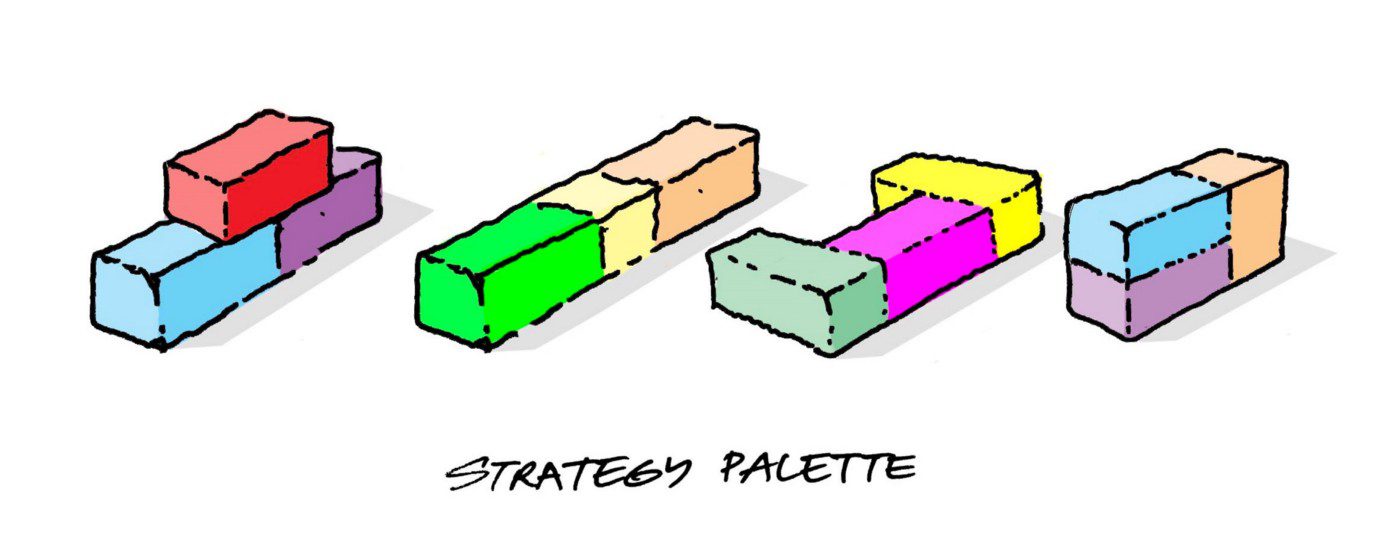
This is true not only for companies but also for different business units within the same company. The game shows that a single standard process for strategy is no longer viable, hence inviting and legitimizing a broader set of approaches beyond planning.
Invert your company
To play this game, first think through your current business model, identify underlying assumptions, and make them explicit. For example, a car manufacturer’s business model might be based on the assumption that people want to buy cars, that cars will be manufactured in factories, that the main offering of the company is cars, etc.
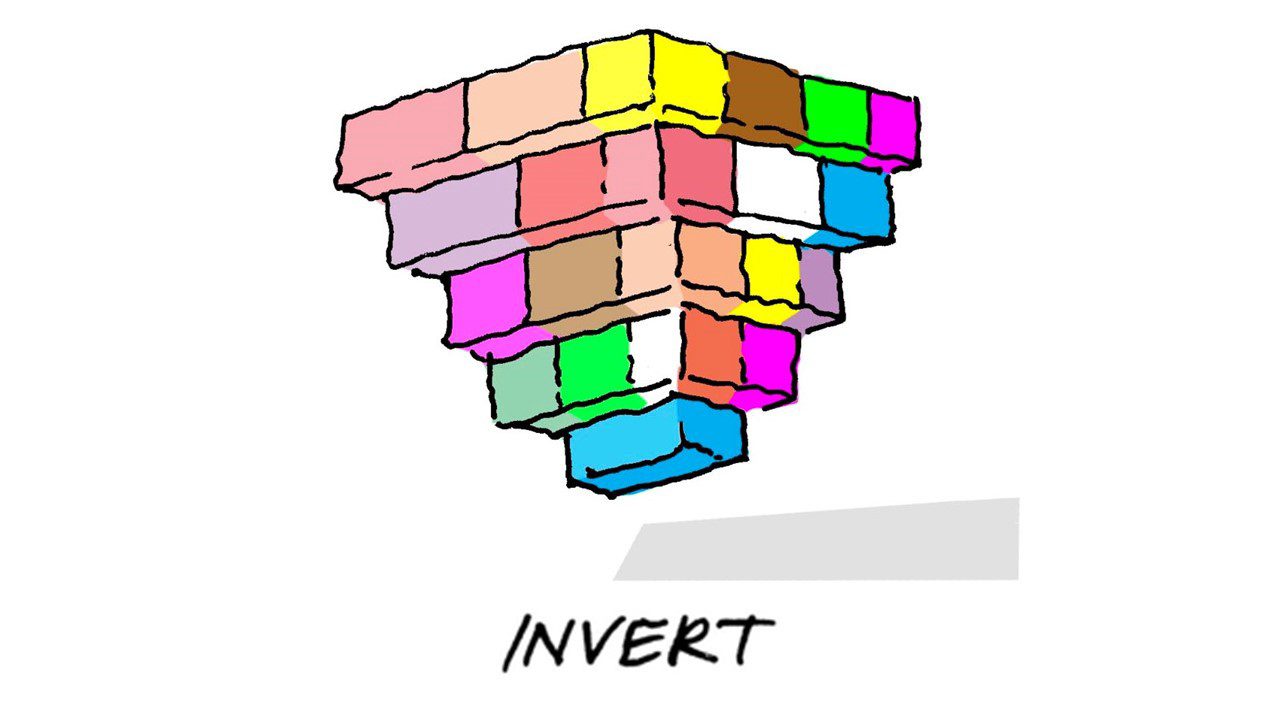
The next step is to invert these assumptions, either by reversing them or radically changing them in some way. Then imagine and make the best case for doing business based on these inverted assumptions. For example, inverted assumptions could include: that people only rent cars (that the offering is a service not a product), or that cars or parts are made by 3D printing in a decentralized fashion. The important thing is not to be right, but to stretch the thinking to generate ideas which may be worthy of further consideration. An apparently ridiculous idea might indeed be unviable — or it may be merely unfamiliar and uncomfortable. It is not possible to discover valuable but uncomfortable ideas without first thinking counterfactually.
There are two main intended outcomes of this game: first, to make explicit the assumptions on which your business model is based. Second, to generate new ideas from the inverted company view to open up new possibilities and thinking paths.
Maverick battle
For this game, first make a list of all the companies, large and small, which are implicitly making a bet against your business model. Pick five of these which capture the range of alternative business model assumptions and imagine the implications of each becoming successful to the point of challenging your business. For example, a large real estate company might consider the disruptor Redfin. Though currently small, one could picture a future in which Redfin was a $5 billion firm, and its app-based model for bidding on houses was as popular as the prevailing model of using a real estate agent.
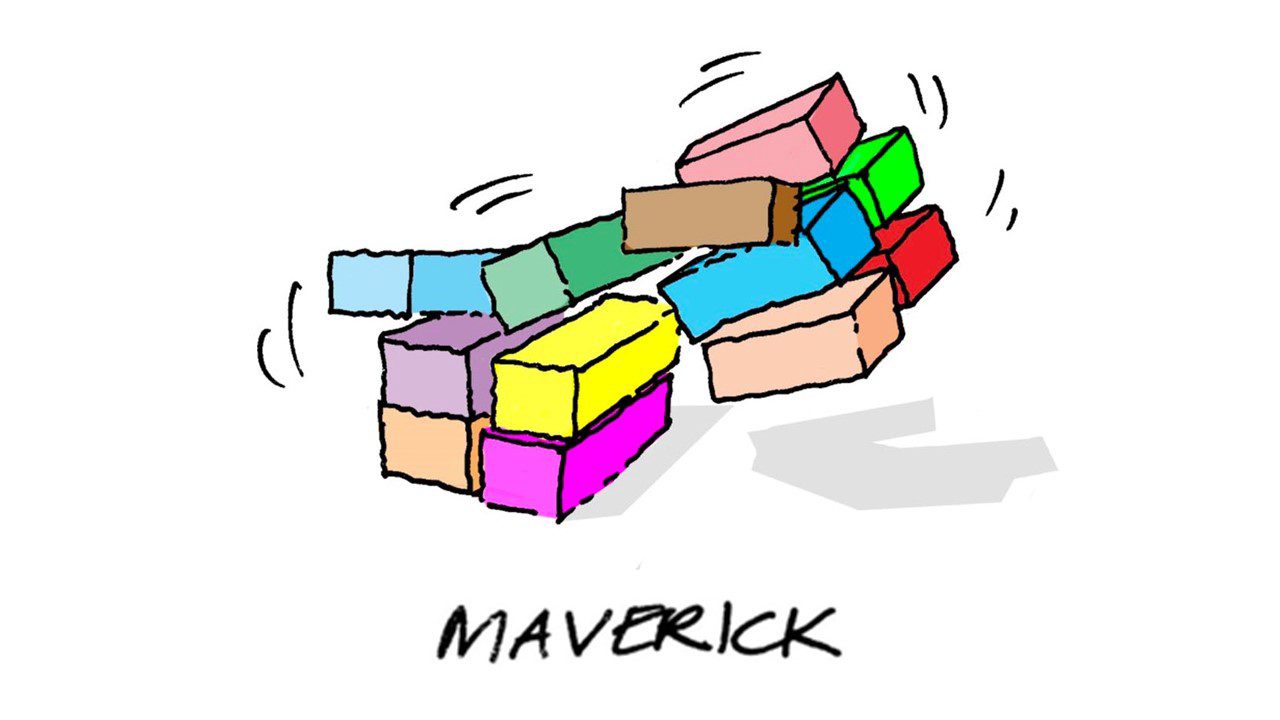
Then, in this future scenario, assuming your company survives, figure out what it would need to have done to successfully compete against the maverick. What strategic moves were made, what capabilities developed or acquired? The point is not whether or not the maverick actually succeeds — most challengers, especially start ups, will likely fail. Rather, the point is to test the disruptive potential of their ideas, to stretch your thinking and in so doing, discover new threats and opportunities.
Doing this can lead to three useful outcomes. First, by imagining the means by which mavericks could succeed, you can understand better their ideas and selectively incorporate them into your own business model. Second, by considering potential future rivals, you can identify and prepare potential counter-moves in advance. Thirdly, you can broaden the set of ideas which form the starting point for strategy development, and in so doing, reduce the all-too-common danger that the result of your strategy process is merely a marginal variant of the status quo.
Destroy your business
Select an area of your business and contemplate how to disrupt it. Play the role of a disruptor, flesh out the details of its business model and how it would go about realizing it.
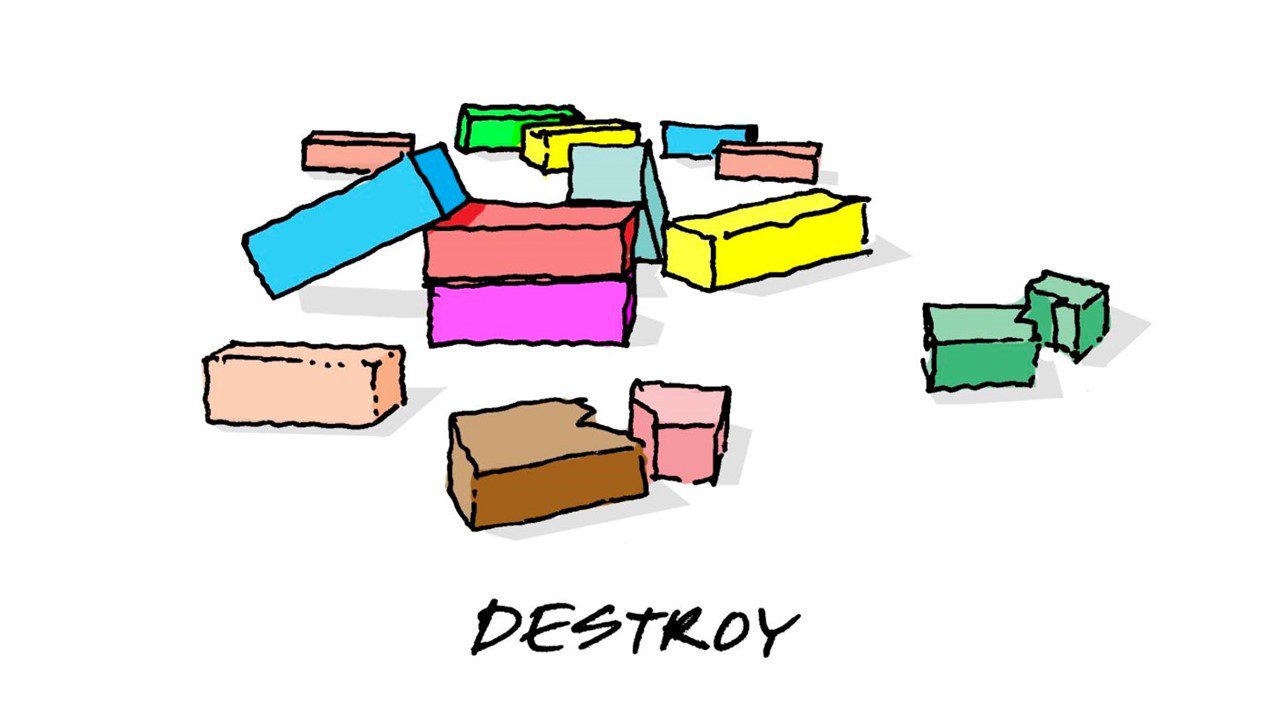
The game surfaces your company’s key vulnerabilities and identifies disruptors’ potential moves and success factors. Once those have been identified, you can consider whether you want to integrate these elements in your own strategy. GE famously systematized the approach in the late 1990s, asking each of its units to have one “DestroyYourBusiness.com” team to come up with Internet-based disruptive ideas. By adopting such an approach, companies can ensure an ongoing external-oriented and flexible mindset which helps reduce the risk of being caught off guard. This is critical, since research indicates that the single biggest predictor of success in major change, is the timing of initiation.[2]https://www.bcg.com/en-us/publications/2018/preemptive-transformation-fix-it-before-it-breaks.aspx
Bad customer game
Meet the people that do not use your products or services or who have major dissatisfactions with your business model. Understand their business, their economics and their motivations. Then attempt to conceive a business model which would satisfy these ‘bad customers’.

It’s satisfying to focus on current customers who like you. Almost by definition, your largest, longest-standing customers appreciate you. But they may not be able to tell you very much about the disruptive ideas which could undermine your business model. A lot can be learnt from the people who have gone off your product or have no interest in it. For example, what would it take to convince an iPhone fan to purchase an Android phone? Or a Mac user to switch to a Windows computer? Disruption often starts from non-customers, or marginal customers, and thus can provide a window into the future.
This game should lead to a better understanding of your company’s weaknesses and self-imposed limits. By contemplating these, you not only alert yourself to possible threats but also discover untapped opportunities to expand your customer base or revitalize your business model.
Activist attack
A common model for when a PE firm buys a company, for example 3G Capital’s takeover of Heinz, is to fundamentally rethink the business and to strip out all unnecessary complexity and inefficiency. Rather than assuming the validity of the current way of doing things, as companies often do in their routine strategy process, activists start from a ‘blank sheet’. Then they remove what is not part of the reimagined company.
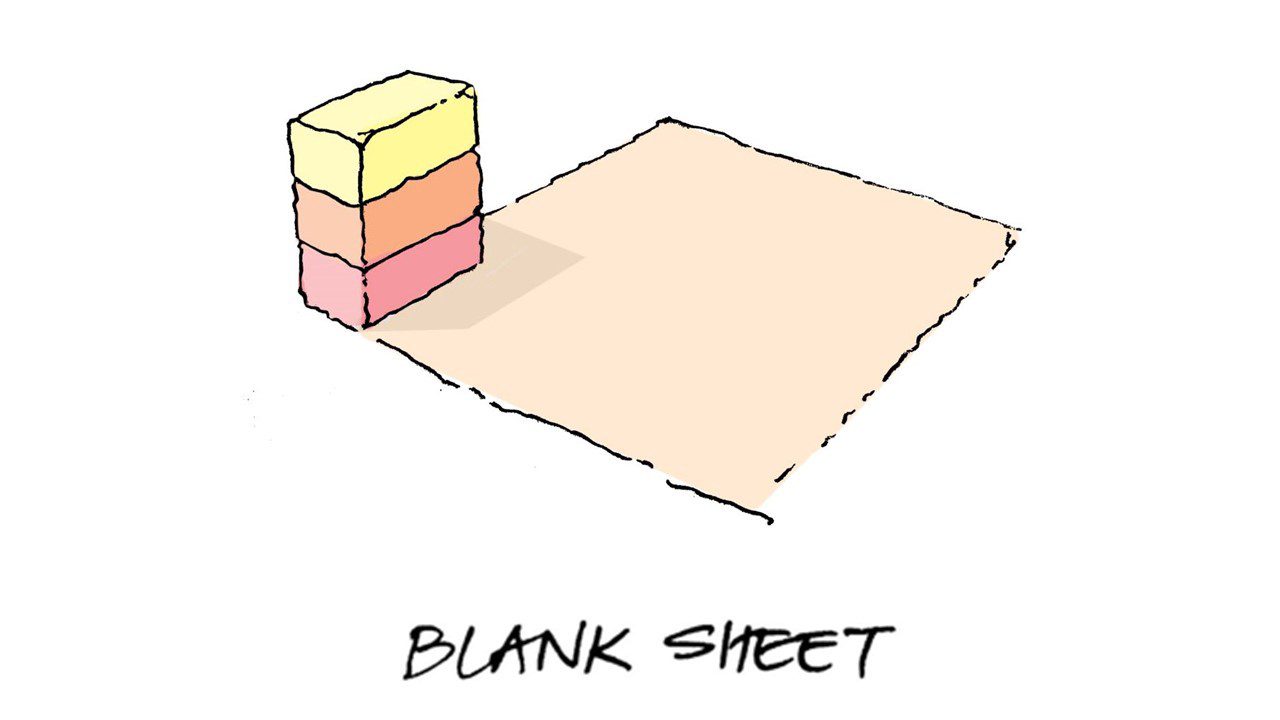
Rather than waiting to be targeted or acquired by an aggressive PE firm or by activist investors, we can preemptively simulate such an attack. Imagine starting from zero in building your current company. What is strictly necessary to perform excellently and create loyal and satisfied customers? Once you have built up this picture, turn back to your current model and try to identify unnecessary complexity and cost. Some companies even hire advisors with long experience in PE or activist investing to help them keep the exercise honest.
Of course, your collective imagination around what you do and don’t require for success isn’t guaranteed to be right. But the game is a starting point for raising questions which the subsequent strategy process needs to address, and generating options to free up resources for investing in future growth.
Fix your customer’s life
Amazon aims to ‘solve shopping’ for its customers. That is, it has identified an entire area of its customer’s life and aims to solve any and all problems in this area, even if they have never been addressed or solved by any business before. They are framing needs which current customers may not even realize they have.
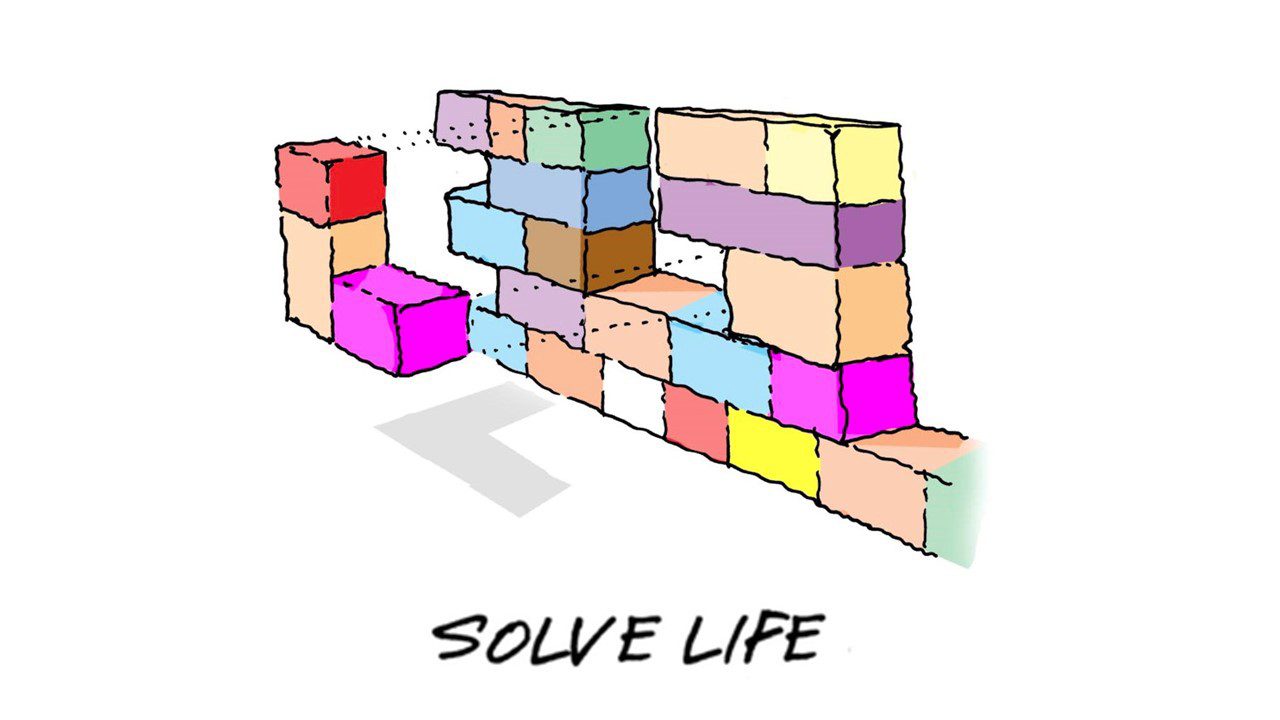
For this game, ask yourself: what area of your customer’s life your company addresses. It is important to picture this holistically from the consumer’s perspective, not from the narrower perspective of suppling them with today’s products and services. For example, a bank is fundamentally concerned with solving money-related needs. An Amazon-like real-estate company would be aiming to ‘solve accommodation’ for people. This might include products and services we currently classify under interior design, construction, financing, hospitality and travel — as well as services yet to be invented. These might include, for example, psychological questions such as when is the right time to move house, why you want to move and what you are truly looking for from a home as a function of your life stage and outlook.
Step back from operations and current products and think about the area of human life that your company touches. Think about the problems which no one else has solved for yet. This is the territory you could move into to build a winning strategy for the future.
Friction game
Imagine a business where customers experienced no friction: perfect choice, perfect information, no search costs, perfect customer understanding of your offering, perfect availability, no mistakes, no quality issues or rework and no delays. Then imagine, relative to this ideal scenario, where your actual business departs from it. Quantify the cost involved and ask yourself: What are the sources of friction which are largest and most tractable to reduce? Imagine a business model which would create this improved customer experience.
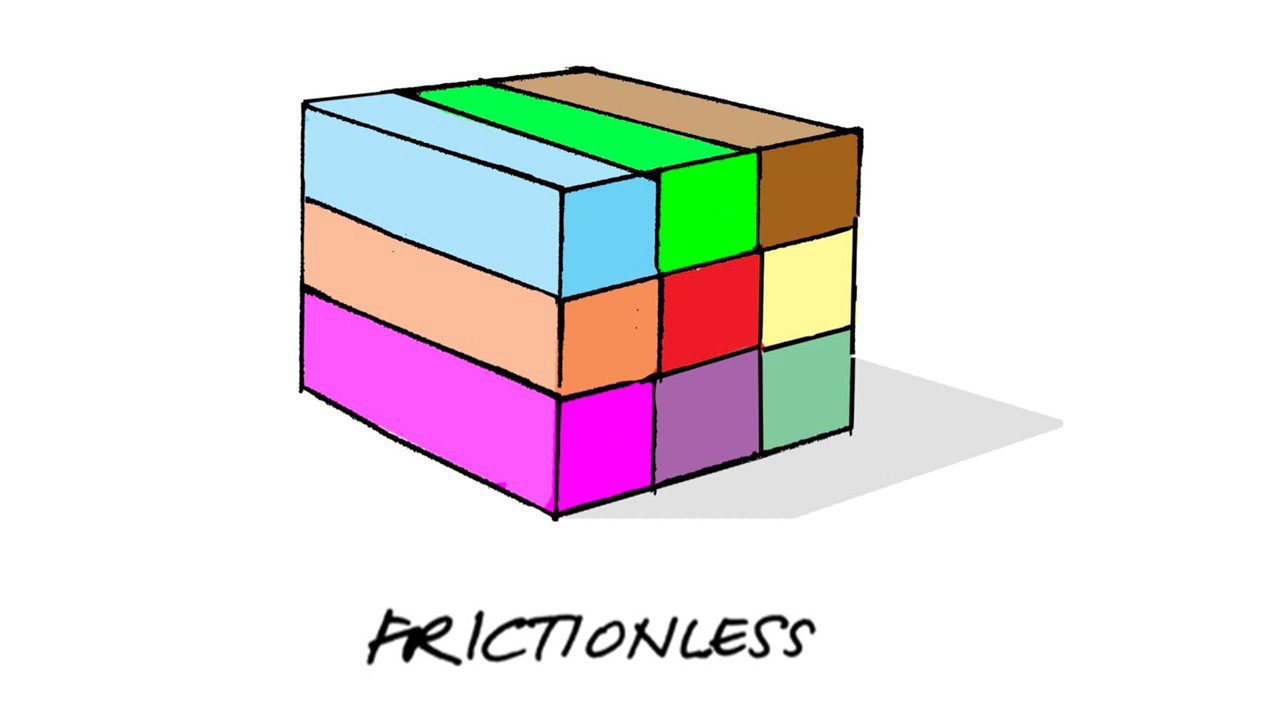
Of course no business meets the ideal of a friction-free business. But disruptors, to have a viable and compelling proposition, will implicitly be addressing a source of friction which incumbents take for granted. It can be hard to identify such frictions, since the current business model may have decades of precedent. There may be no customers complaining about, nor competitors yet addressing these frictions. For this reason, it is best to compare against the friction-free insurance company, as an example, so we could ask: Is it inevitable that there are many risks which are hard to insure, that insurance contracts are hard to understand, that it’s hard for individuals to comprehend their total risk profile, that it’s painful to adjust one’s insurance portfolio, that intermediaries take substantial margins for providing navigation and advice, or that claims are resolved only after substantial delay?
The friction game can help envision sources of disruption preemptively, and surface ideas on how to better serve customers with more competitive and economically attractive business models.
Heroic press conference
Your company’s embryonic new business venture has become immensely successful. Imagine the press conference explaining this success. What would it be like? What would you say about your company? Then consider what it took for the company to get there.
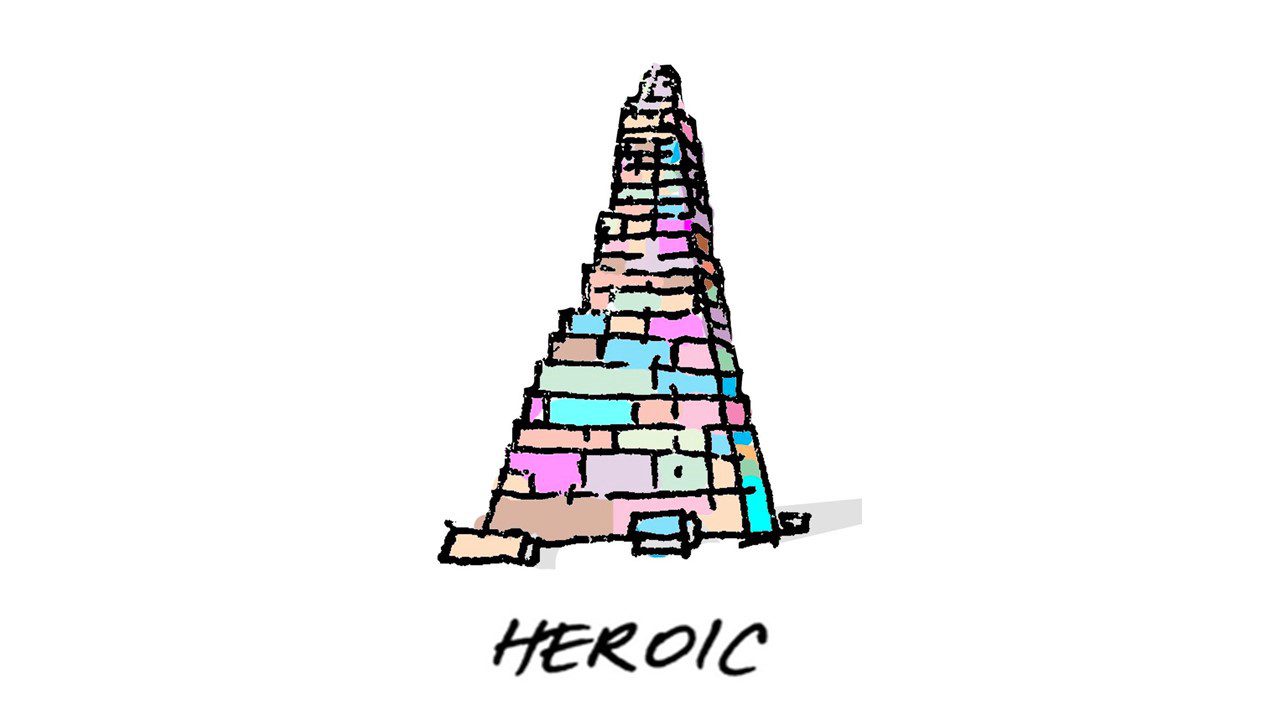
The heroic press conference game can align stakeholders on a vision of success and help elaborate the concrete steps required to reach it. There is a stage where a new innovation exists and is known but may not yet seriously contemplated as a future pillar of the business. Scaling an innovation requires not only an increasing allocation of resources, and removing bottlenecks to expanding operational scale, but also growing belief and adoption by employees, customers and investors. Working backwards from the counter-factual of assumed success can help create the narrative that brings this about.
Preemptive post-mortem
Come up with a couple of plausible catastrophic events (e.g., natural disasters, or competitive disruptions) and think about how your current or contemplated strategy would be impacted.
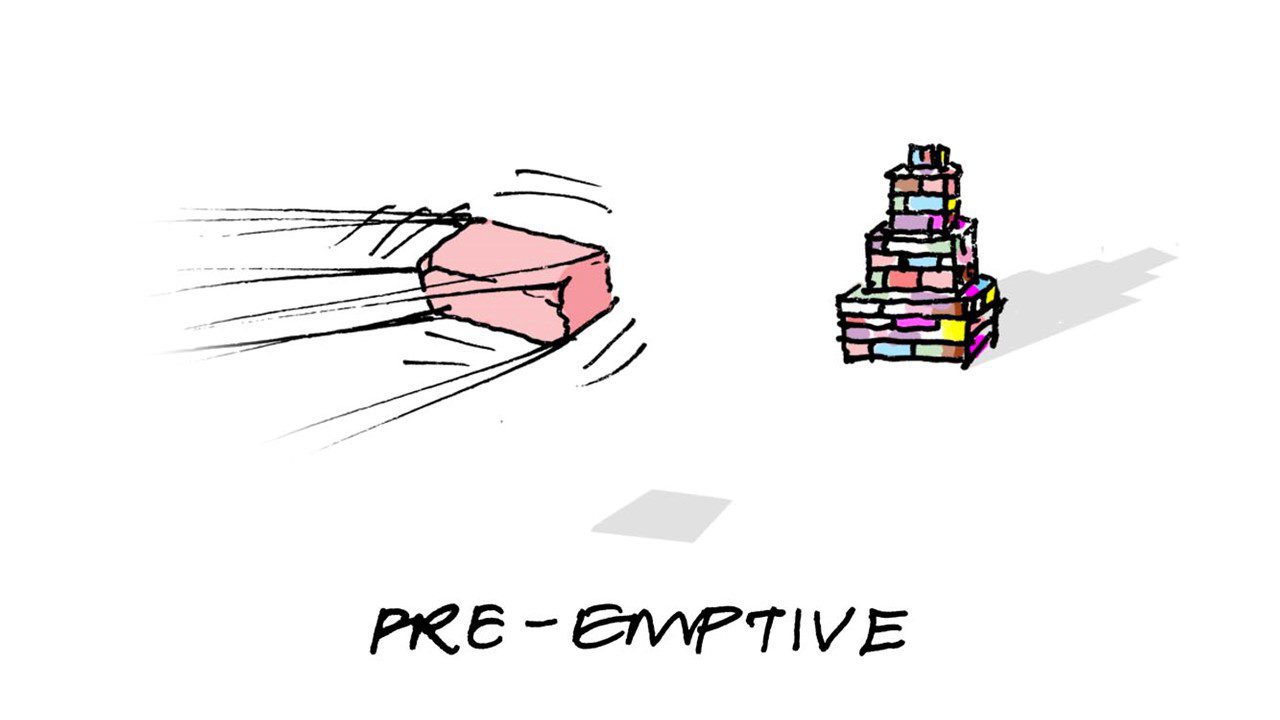
The effectiveness of a new strategy can be hard to assess. Confronting it with dramatic events is a great way to further push the thinking, making it more robust. In today’s business world, the longevity of a strategy is as important as its immediate attractiveness.
The game lets participants identify risks to take into account when further developing the strategy, identify the conditions under which it could fail and develop the actions required to mitigate these.
Combinations of games
The games described above can be leveraged in various combinations depending on your company’s specific situation and needs: you can choose to use one, several, or all of the games as part of your strategy process. You can use the games as a prelude to a formal strategy process, or even as alternative to a more traditional strategy process.
For example, here are several combinations of games which address common business needs:
- Rethink the company’s strategic direction: start with “Your Strategy Needs a Strategy”, followed by “Invert your company”, “Activist attack”, “Heroic press conference” and “Preemptive post-mortem”
- Identify and react to potential disruptive threats: start with “Your Strategy Needs a Strategy”, followed by “Maverick battle”, “Friction game”, “Destroy your business” and “activist attack”
- Enhance customer focus: start with “Your Strategy Needs a Strategy”, followed by “bad customer game”, “Friction game” and “Fix your customers’ life”
- Foster alignment around and elaboration a new strategy: start with “Your Strategy Needs a Strategy”, followed by “Heroic press conference”
How to run strategy games effectively
Running games successfully requires the right environment, the right mindset and the right participants.
Playfulness happens when people feel comfortable enough to think freely, allowing established ideas and interests to be challenged. The ‘playground’ needs to be a judgment-free area, favoring suggestion and elaboration over argumentation. This can be helped by escaping the traditional meeting room, which can signal business as usual.
Yet changing the space is only effective when it is accompanied by changing the mindset. This comes from the top: managers should be careful to suspend judgment and encourage others to do the same. “The best way to have a good idea is to have a lot of ideas” says Nobel winner Linus Pauling. Judgment can occur after the game, once the development of a strategy begins. Counterfactual thinking works by elaboration, and thus requires patience and a constructive approach. The starting points are often vague or odd — before the picture gets filled in, or serves as a jumping-off point to other ideas.
Success with games, finally, relies on selecting the right players. Participants should include those with the power to act on the ideas or influence those who can. It should ideally also involve a diversity of viewpoints: different positions within the company, business units and cognitive styles. Yet the greater diversity in positions (e.g. the CEO and an associate in the same room), the more attention is required to mindset, to ensure that people feel able to contribute.
Running games as a precursor to the strategy process can free up the precious resources of our minds, which determines how other resources are subsequently used. Games take us beyond habitual assumptions and processes, and set the ground for reading critical changes in the business environment and responding with a creative new strategies.






